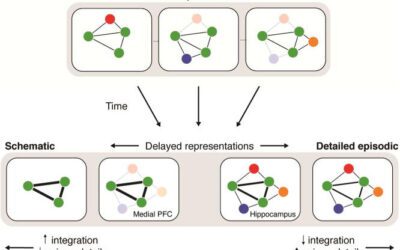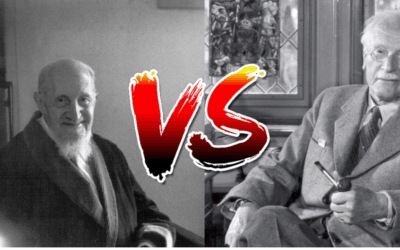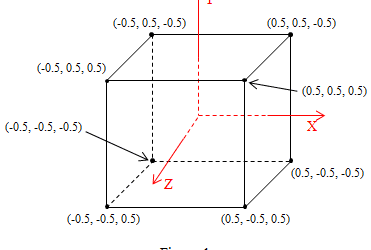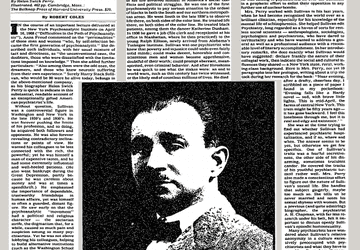
“Faustus: Stay, Mephistophilis, and tell me, what good will my soul do thy lord? Mephistophilis: Enlarge his kingdom. Faustus: Is that the reason why he tempts us thus? Mephistophilis: Solamen miseris socios habuisse doloris. (It is a comfort to the wretched to have companions in misery.)”
Christopher Marlowe, Doctor Faustus
Narcissistic abuse is a particularly insidious form of emotional and psychological manipulation that can have profound and long-lasting effects on its survivors. Unlike physical abuse, which often leaves visible scars, narcissistic abuse operates in the realm of the invisible – it’s a kind of soul wounding that can be hard to name, hard to understand, and even harder to overcome.
At its core, narcissistic abuse is about the systematic erosion of the victim’s sense of self. Through a variety of covert tactics – including gaslighting, projection, and intermittent reinforcement – the narcissist gradually convinces their target that they are flawed, inadequate, and utterly dependent on the abuser for any sense of worth or validation.
Over time, this creates a devastating bond of trauma and control, a psychological hostage situation in which the victim’s own mind is turned against them. They may feel like they’re walking on eggshells, constantly second-guessing their own perceptions, emotions, and instincts. They may blame themselves for the abuse, believing that if they could just be better, work harder, love more selflessly, they could stop the pain.
But here’s the crucial thing to understand: narcissistic abuse is never the victim’s fault. It arises solely from the pathological deficits and distorted drives of the abuser. No amount of love, care, or compromise can fill the bottomless void of the narcissist’s wounded ego or prevent them from exploiting and devaluing others.
So how do we begin to break free from the patterns of narcissistic abuse? How do we reclaim our minds, our hearts, and our lives from the shadow of the narcissist? Let’s explore some key perspectives and strategies from various therapeutic traditions.
The Psychodynamic Perspective: Understanding the Narcissistic Wound
To truly grasp the dynamics of narcissistic abuse, it’s helpful to understand what drives the narcissist’s behavior in the first place. Psychodynamic theories, which focus on early childhood experiences and unconscious mental processes, offer some illuminating insights.
According to this view, pathological narcissism arises from a deep wound to the developing self, usually in the form of chronic misattunement, neglect, or abuse from primary caregivers (Kernberg, 1975). Denied the consistent empathy and validation needed for healthy ego development, the young narcissist instead forms a grandiose false self – a facade of specialness and invulnerability that defensively conceals an underlying sense of toxic shame and emptiness.
In adulthood, the narcissist compulsively seeks out others to shore up this fragile self-structure. They may idealize potential partners, seeing them as extensions of their own greatness. But as soon as reality punctures this illusion – as soon as the partner reveals their separate needs, flaws, or boundaries – the narcissist feels injured and enraged. They lash out with a campaign of devaluation and contempt, punishing the other for failing to maintain the narcissistic fantasy (Kohut, 1972).
For the victim of narcissistic abuse, understanding this deeper psychology can be validating and liberating. It confirms that the abuse was never about them – their worthiness, lovability, or strength – but about the narcissist’s own unresolved wounds and defenses. It gives a framework for recognizing red flags and patterns that may have felt nebulous before. And it opens space for empathy – not just for oneself, but even for the narcissist, as a deeply damaged and limited human being.
The Trauma-Informed Perspective: Healing the Fragmented Self
Narcissistic abuse is, at its core, a form of complex trauma. It involves the long-term exposure to emotional harm within the context of an intimate relationship, often with no visible way out. As such, healing from narcissistic abuse requires a trauma-informed approach – one that recognizes and addresses its impact on all levels of the survivor’s being.
One powerful lens for understanding this impact is the theory of structural dissociation (Van der Hart et al., 2006). According to this model, chronic trauma causes the psyche to fragment into different parts, each holding a piece of the overwhelming experience. There may be a part that remains stuck in the moment of abuse, reliving the terror and helplessness. There may be a part that holds the rage and defiance that couldn’t be expressed. There may be a part that carries on with daily life, trying to function as if nothing happened.
The goal of trauma-informed therapy is to help these dissociated parts reconnect and communicate, so that the painful experiences can be integrated and resolved. This is a delicate process that must unfold gradually and safely, at the pace of the survivor’s nervous system.
Approaches like Sensorimotor Psychotherapy (Ogden & Fisher, 2015) and Somatic Experiencing (Levine, 2010) work directly with the body to release trapped survival energies and restore physiological regulation. Parts work therapies like Internal Family Systems (IFS) (Schwartz, 1995) and Ego State Therapy (Watkins & Watkins, 1997) help the fragmented aspects of the Internal Family Systemspsyche to unblend, unburden, and ultimately collaborate under the leadership of the core Self.
As the survivor learns to extend curiosity and compassion to their inner world, the hold of the trauma begins to loosen. Dissociated experiences can be gently felt, expressed, and released. Protective parts can be honored for their efforts and invited to relax their hypervigilant roles. And the core Self can emerge as a stable, compassionate inner presence, able to meet the challenges of life with growing resilience and flexibility.
The Existential Perspective: Reclaiming Authenticity and Agency
Narcissistic abuse also poses a profound existential threat to the survivor’s sense of self and personal agency. By its very nature, it involves the eclipse of the victim’s reality by the narcissist’s distorted projections and needs. The survivor may feel like they’ve lost touch with who they truly are, what they genuinely think and feel, and what they most deeply value and desire.
Existential therapy (Yalom, 1980) offers a framework for reclaiming this authentic selfhood in the aftermath of narcissistic trauma. It invites the survivor to confront the fundamental givens of existence – freedom, isolation, meaninglessness, death – and to define their own stance and identity in relation to them.
This may involve grieving the loss of the illusion of safety and certainty that the narcissistic relationship provided, while also embracing the possibilities for self-creation that this loss reveals. It may involve facing the pain of existential isolation – the fact that we are ultimately separate beings, responsible for our own lives – while also opening to deeper forms of connection and belongingness.
Above all, existential work is about taking radical responsibility for one’s choices and actions, in full acknowledgment of the inherent uncertainties and limitations of human life. It’s about learning to tune into one’s own inner compass, to make decisions aligned with one’s authentic values and needs, even in the face of external pressures or fears.
For the survivor of narcissistic abuse, this can be a daunting but profoundly empowering journey. It means no longer outsourcing one’s worth and identity to the changeable mirror of the narcissist, but grounding them in the bedrock of one’s own being. It means daring to trust one’s own perceptions, to speak one’s own truth, to honor one’s own boundaries and desires, even if this means risking disapproval, conflict, or loss.
In the words of existential philosopher Jean-Paul Sartre: “Freedom is what you do with what’s been done to you.” Narcissistic abuse may leave deep scars, but it does not have to define the survivor’s destiny. With courage, support, and a commitment to self-honesty, it’s possible to transmute the pain of the past into a catalyst for profound self-reclamation and growth.
The Relational Perspective: Cultivating Secure Attachments
Finally, healing from narcissistic abuse requires reworking the deep grooves of attachment that the abusive relationship exploited and reinforced. Narcissistic abusers often target individuals with preexisting attachment wounds – such as those who grew up with inconsistent, emotionally unavailable, or abusive caregivers – as they are more susceptible to the narcissist’s cycles of idealization and devaluation.
Attachment-oriented therapies like Emotionally Focused Therapy (EFT) (Johnson, 2019) and Accelerated Experiential Dynamic Psychotherapy (AEDP) (Fosha, 2000) aim to create new, corrective experiences of secure bonding within the therapeutic relationship itself. By providing a stable, attuned, and empathic presence, the therapist helps to rewire the survivor’s expectancies of intimacy and to restore a sense of safety and trust in human connection.
As the survivor internalizes this new relational template, they become increasingly able to recognize and gravitate towards secure attachments outside of therapy as well. They may feel more drawn to relationships characterized by consistency, respect, and mutual care, and more repelled by the erratic, exploitative dynamics that once felt familiar.
This is a gradual process, and it’s not without its challenges. The survivor may need to grieve the loss of relationships that no longer serve them, to set firm boundaries with those who drain or demean them, to risk vulnerability in the face of uncertainty. But with each step, they are moving towards a life of greater authenticity, dignity, and fulfillment – a life in which their needs and wellbeing are treated as inherently valid and worthy of care.
Integrating the Perspectives: Reclaiming the Self from Narcissistic Abuse
Ultimately, breaking free from the patterns of narcissistic abuse is a multi-dimensional process that engages every facet of the survivor’s being. It involves understanding the psychological dynamics that drive narcissistic behavior, while also refusing to let this understanding obscure one’s own truth and reality. It involves tending to the traumatic ruptures in memory, identity, and somatic experience, while also affirming one’s fundamental wholeness and resilience in the face of fragmentation. It involves confronting the existential questions of freedom, isolation, death and meaning that abuse often catalyzes, while also daring to live into the answers that feel most authentic and alive. And it involves grieving the wounds of insecure attachment, while also opening to the possibility of new, more nourishing forms of love and connection.
There is no quick fix or universal formula for this journey. It is a deeply personal, often non-linear path that each survivor must forge for themselves, ideally with the support and guidance of skilled therapists, reliable allies, and fellow travelers.
But with commitment, compassion, and a willingness to bear the unbearable, transformation is possible. The psyche is astonishingly plastic, the human spirit incredibly resilient. Even after years or decades of narcissistic abuse, survivors can reclaim their birthright: the freedom to know, trust, and express their authentic selves in a world of their own making.
This reclamation is an act of profound courage – a refusal to let the narcissist’s projections and distortions eclipse one’s own inner light. It is a declaration of radical self-love and loyalty, a vow to honor the truth of one’s own being, even when others refuse to see it. It is a commitment to wholesomeness, groundedness, and integrity, to living from the inside out rather than the outside in.
In a culture that often enables and even celebrates narcissistic traits, this is a revolutionary undertaking. It represents a break not just from individual patterns of abuse, but from the wider systems of domination, exploitation, and gaslighting that narcissism both arises from and perpetuates.
In this sense, the survivor’s healing journey is more than personal – it is deeply political. By reclaiming their minds, hearts, and lives from narcissistic control, they are not just liberating themselves, but striking a blow to the very foundations of narcissistic power. They are modeling a different way of being human – one rooted in empathy, authenticity, and interdependence, rather than grandiosity, deception, and domination.
This way of being is a threat to the narcissistic status quo. It undermines the relational and ideological webs that narcissists spin to entrap their victims. It exposes the hollow core of the narcissist’s false self, the emptiness behind their masks of charm and invincibility. And it invites others to question the distorted realities they’ve been fed, to trust the authority of their own experience, to step into their own light and power.
In the end, then, the survivor’s journey is not just a personal odyssey, but a collective awakening. As more and more individuals break free from narcissistic abuse and reclaim their authentic selfhood, they create ripple effects of truth-telling and healing that touch every corner of society. They remind us of the resilience and beauty of the human spirit, the possibility of growth and renewal even in the face of unimaginable pain.
May we all find the courage to undertake this journey when it calls us. May we dare to stand in our own truth, to honor our own worth, to love ourselves and each other with the depth and integrity that is our birthright. And may we work together to create a world in which such journeys are no longer necessary – a world beyond narcissism, beyond abuse, beyond the dim corridors of manipulation and into the spacious, sunlit fields of mutual care and empowerment.
References:
Fosha, D. (2000). The transforming power of affect: A model for accelerated change. Basic Books.
Johnson, S. M. (2019). Attachment theory in practice: Emotionally focused therapy (EFT) with individuals, couples, and families. Guilford Press.
Kernberg, O. F. (1975). Borderline conditions and pathological narcissism. Jason Aronson.
Kohut, H. (1972). Thoughts on narcissism and narcissistic rage. The Psychoanalytic Study of the Child, 27(1), 360-400.
Levine, P. A. (2010). In an unspoken voice: How the body releases trauma and restores goodness. North Atlantic Books.
Ogden, P., & Fisher, J. (2015). Sensorimotor psychotherapy: Interventions for trauma and attachment. W.W. Norton & Company.
Schwartz, R. C. (1995). Internal family systems therapy. Guilford Press.
Van der Hart, O., Nijenhuis, E. R., & Steele, K. (2006). The haunted self: Structural dissociation and the treatment of chronic traumatization. W.W. Norton & Company.
Watkins, J. G., & Watkins, H. H. (1997). Ego states: Theory and therapy. W.W. Norton & Company.
Yalom, I. D. (1980). Existential psychotherapy. Basic Books.


























0 Comments